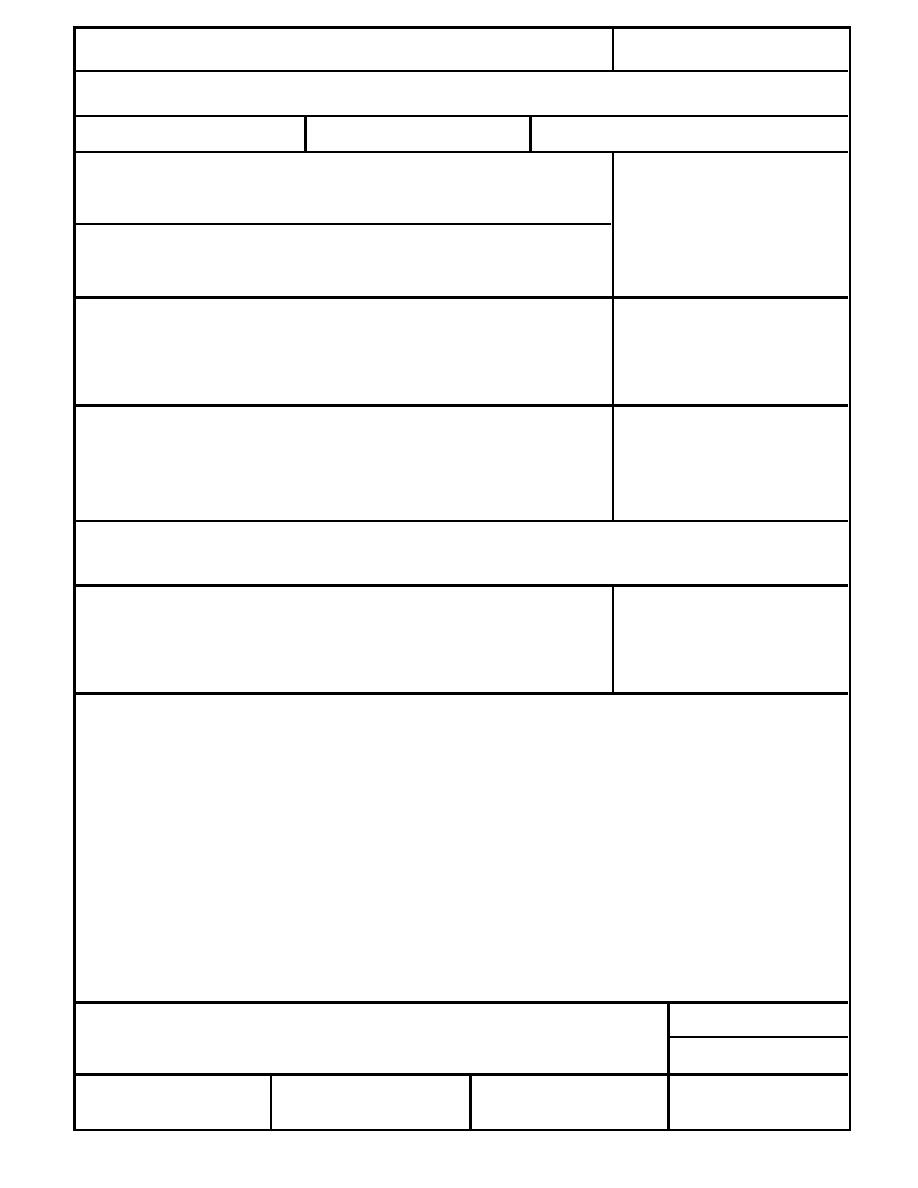
Form Approved
REPORT DOCUMENTATION PAGE
OMB No. 0704-0188
Public reporting burden for this collection of information is estimated to average 1 hour per response, including the time for reviewing instructions, searching existing data sources, gathering and
maintaining the data needed, and completing and reviewing the collection of information. Send comments regarding this burden estimate or any other aspect of this collection of information,
including suggestion for reducing this burden, to Washington Headquarters Services, Directorate for Information Operations and Reports, 1215 Jefferson Davis Highway, Suite 1204, Arlington,
VA 22202-4302, and to the Office of Management and Budget, Paperwork Reduction Project (0704-0188), Washington, DC 20503.
1. AGENCY USE ONLY (Leave blank)
2. REPORT DATE
3. REPORT TYPE AND DATES COVERED
July 1995
4. TITLE AND SUBTITLE
5. FUNDING NUMBERS
Heat Transfer and Frost/Thaw Penetration in Soil Surrounding an
PR: 4A762784AT42
Inclusion of Sand: Numerical Model Results Relevant to
WP: 157
Electromagnetic Sensor System Performance
WU: AT42-CS-W05
MIPR: FY7620-93-AVJ213
6. AUTHORS
Lindamae Peck and Kevin O'Neill
7. PERFORMING ORGANIZATION NAME(S) AND ADDRESS(ES)
8. PERFORMING ORGANIZATION
REPORT NUMBER
U.S. Army Cold Regions Research and Engineering Laboratory
72 Lyme Road
CRREL Report 95-13
Hanover, New Hampshire 03755-1290
9. SPONSORING/MONITORING AGENCY NAME(S) AND ADDRESS(ES)
10. SPONSORING/MONITORING
AGENCY REPORT NUMBER
Office of the Chief of Engineers
U.S. Air Force Electronic Security
Washington, D.C. 20314-1000
and Communications Center
Hanscom AFB, Massachusetts
11. SUPPLEMENTARY NOTES
12a. DISTRIBUTION/AVAILABILITY STATEMENT
12b. DISTRIBUTION CODE
Approved for public release; distribution is unlimited.
Available from NTIS, Springfield, Virginia 22161.
13. ABSTRACT (Maximum 200 words)
One- and two-dimensional numerical simulations of heat flow in silty soil with and without a sand inclusion
(15 cm thick, variable width) have determined the magnitude and the lateral extent of the disruption in frost
and thaw penetration attributable to the presence of the inclusion. Four different soil temperature histories, de-
rived from field data at a Vermont site, were used as the surface boundary condition for the winter-long simu-
lations. This identified differences in frost depth and soil temperature resulting solely from an overall colder or
warmer soil surface condition. For a given surface boundary condition, the moisture content of the soil was var-
ied (10, 17 or 25%, by weight) to contrast the changes in frost penetration caused by the moisture-dependent
differences in soil thermal conductivity and latent heat. The drier sand (3% moisture content by weight) with
its smaller latent heat freezes more rapidly than does the soil under identical conditions, so initially (early win-
ter) frost penetration is greater (by 56 cm) when the sand inclusion is present because the freezing front pro-
ceeds rapidly through the sand. Subsequently, the freezing front is deeper (by a maximum of 11 cm) in soil
without a sand inclusion. The less conductive sand impedes heat flow toward the soil surface, resulting in high-
er soil temperatures beneath the inclusion, which in turn retards freezing of the soil. Frost penetration beneath a
sand inclusion is deeper the drier the soil is; with no sand inclusion present, frost depth is greater the more
14. SUBJECT TERMS
15. NUMBER OF PAGES
28
Buried electromagnetic sensor
Heat transfer
Sand inclusion
Freezethaw
Moisture content
Soil temperature
16. PRICE CODE
Frost depth
Numerical simulations
Winter weather
17. SECURITY CLASSIFICATION
18. SECURITY CLASSIFICATION
19. SECURITY CLASSIFICATION
20. LIMITATION OF ABSTRACT
OF REPORT
OF THIS PAGE
OF ABSTRACT
UNCLASSIFIED
UNCLASSIFIED
UNCLASSIFIED
Standard Form 298 (Rev. 2-89)
NSN 7540-01-280-5500
Prescribed by ANSI Std. Z39-18
298-102



 Previous Page
Previous Page
